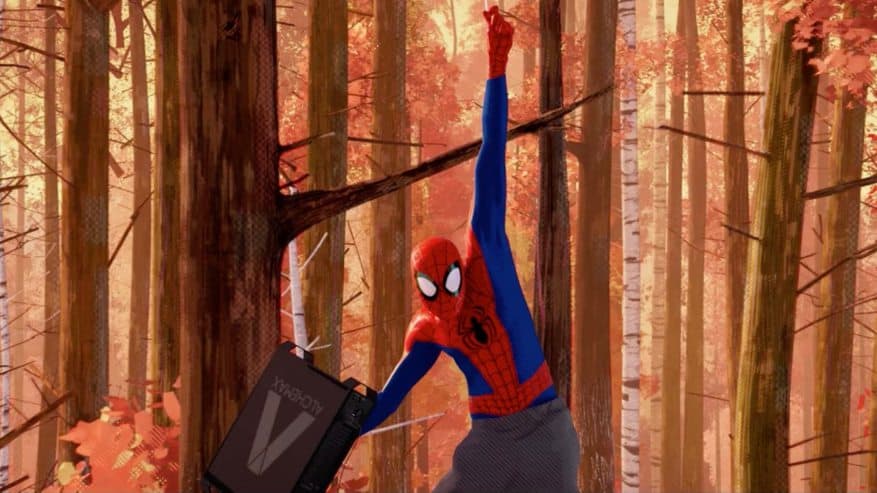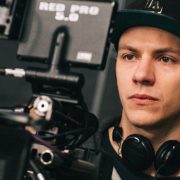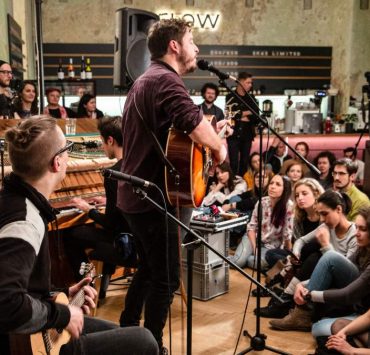Krisztian Szeibold is a Hungarian lighting and compositing artist who had the chance to work on the production of Spider-Man: Into the Spider-Verse. The film won the Academy Award for best animated feature in 2019.
We asked him about his career, his most exciting challenges and of course, Spider-Man.

Tell us a little bit about your career path (how you started out, where you studied, other productions you’ve worked on) and how it led to you getting to work on this movie?
It’s kind of a funny story. I wanted to be a programer so I took an Information Technology class in high school. Then I started a Program Designer Mathematician major at the university, which is a little bit far from computer graphics.
Right before 2000, one of my great friends showed me a 3D graphics program. It amazed me how you are able to create worlds from whatever you can imagine with this powerful tool. In the following years, I spent more time learning graphics than programming.
In 2003 I decided to give up my programming dream and change my studies to Communication Techniques Engineering – Presentation Technics because it was slightly closer to computer graphics. At that time I didn’t have any options other than learn and practice more and more computer graphics at home in my spare time. I wanted to be a VFX artist and work on blockbuster movies.
As a self-taught newbie after my studies, I started to work as a 3D General Artist and Compositor on TV commercials and movies in 2007. Five years later I was working as a Lighting and Compositing artist on game cinematic trailers at Digic Pictures.
Since 2015, I have worked on many great live-action and animation movies and series at different companies/countries such as: The Jungle Book at Moving Picture Company in London, United Kingdom, Final Fantasy XV, Fantastic Beasts and Where to Find Them, Power Rangers, Logan, Detroit, Kin and Lost in Space at Image Engine Design in Vancouver,Canada, and Rampage at Weta Digital in Wellington, New Zealand.
All these projects and years of experiences gave me the opportunity to be considered by Sony for the Spider-Man: Into the Spider-Verse movie.
What is it that makes Into the Spider-Verse stand out?
Many aspects of this project stand out, for example the story, the animation and the visual style/appearance. I was responsible for this last area. The look of this movie is so unique, I have never seen this mixture of CG animation and comic book style before.
What were the biggest challenges that you had to face throughout the production?
The methods to reach that level of details and mix of CG animation and comic book style make the visual part so interesting and fantastic. Also, this part was particularly difficult to work with. This was one of the most difficult and complex projects I have ever worked on. The design wasn’t entirely preplanned; it changed a lot along the project which gave us more freedom to be creative. The quality requirements were overwhelming and we worked a lot in order to reach that level. The directors, VFX supervisors and CG supervisors checked our work every day and gave us a long list of where we need to improve our shots in the next versions. On the other hand, Imageworks provided us a handful of tools to make our life easier. Since this project is also a 3D movie, working with this special look was even more challenging.
There are a lot of styles and techniques mixed in the animation and the visuals. Can you tell us a little bit about that? Which styles are your personal favorites?
On the animation part, it brings back some elements from the traditional cartoon style such as the stop-motion effect of the movements. Also, the animators duplicated the characters leg and hand gestures to imitate motion blur. All these things were so difficult for the animators, and for us compositors too.
On the visual part, all those halftone dots, hatching lines, and quantized shading made the visual part closer to the comic book style. These details made the project visually appealing but a nightmare to work with. It was great to learn to use these traditional methods. It did stretch our hardware and software resource to their limits though, and made us work much more than originally expected.
Is Spider-Man a personal favorite of yours? Which comics stand the closest to your heart?
I grew up on the early stories of Spider-Man from Marvel, Superman and Batman from DC Comics. They are my favorite superheroes. Although when I was way younger, my favorite one was Garfield. 🙂
Honestly, I barely knew anything about this multi-universe part of the Spider-Man story, only how Peter Parker became Spider-Man. It was a big surprise and a bit confusing for me when I first saw the other Spider-Man characters, the multiple universes and the older Peter Parker in the animatic phrase. I really enjoyed this part as well, as it made the story more interesting and funny.
What is your absolute dream as a lighting and compositing artist? Do you have a bucket list of things that you’d like to achieve/work on?
For now, I want to focus on being a better artist, sharpening my skills and working on some new, exciting challenges. Thank you for the interview and everyone who helped me to able to reach that journey.




